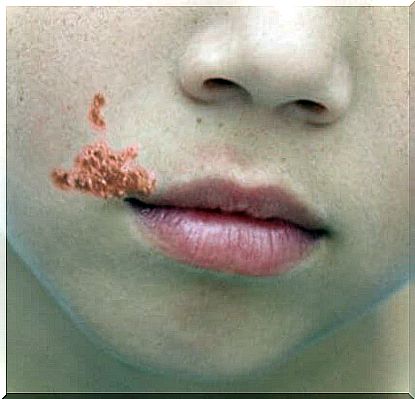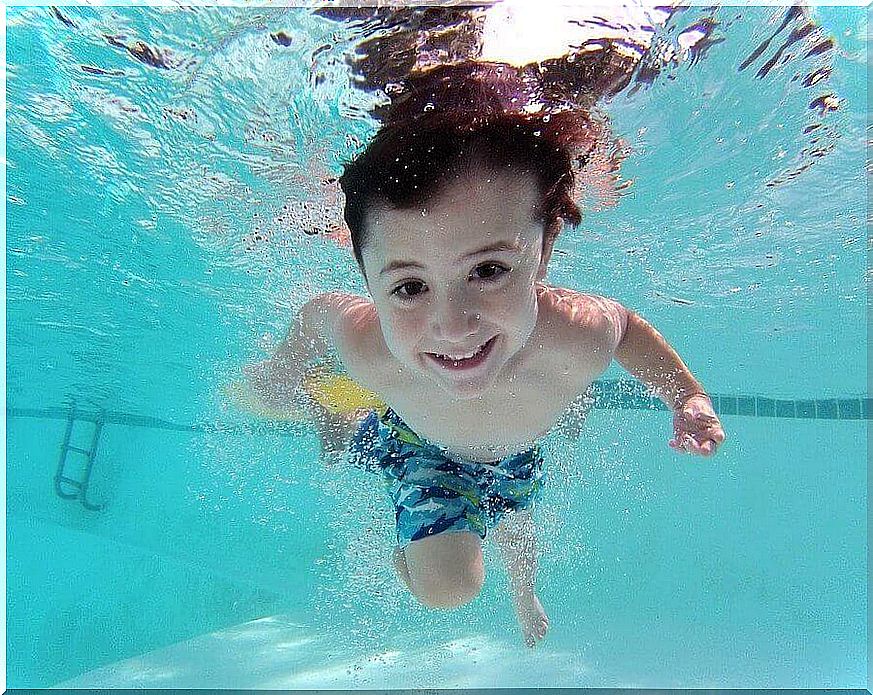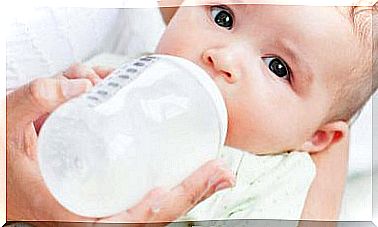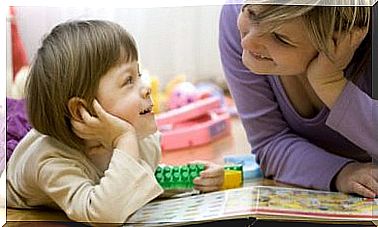Contagious Impetigo In Children: Causes And Treatment

Contagious impetigo is a skin infection that can be seen frequently in childhood, especially in preschool children.
This pathology is divided into two types, bullous impetigo and non-bullous impetigo, which constitute a large percentage of cases. We will give more details about this disease below.
Clinical forms of contagious impetigo
Both the diagnosis and the treatment to be indicated are determined based on clinical criteria, especially the rash, which is its main characteristic.
There are two types of contagious impetigo, which will be explained below:
bullous impetigo
This type of contagious impetigo has the characteristic of appearing as superficial blisters of 5 to 30 mm in diameter, which can easily rupture and cause a thin scaly crust.
It usually appears on the trunk or genitals, and in rare cases a regional adenopathy may be seen.
non bullous impetigo
Non-bullous impetigo begins with the appearance of vesicular or pustular lesions 1 to 4 mm in diameter, which can break very easily, giving rise to thick meliceric crusts.
In this case, the lesions usually appear on the face or extremities and can cause the region to itch.

prevention methods
Impetigo often spreads easily because preventive measures are not taken and proper hygiene habits are not in place. If the child has not yet contracted the disease, it is essential to follow some recommendations:
Recommendations for preventing infection
- Wash your hands and shower continuously.
- Cut and keep baby’s nails clean.
- Dry the baby’s saliva properly so that there is no residue around your mouth. When left for a long time, saliva can favor the appearance of impetigo.
- Keep your skin hydrated with creams recommended by your pediatrician.
- Get medical attention immediately if rashes are noticed.
Recommendations before contagion
- Do not share towels, clothing or any personal effects with another person.
- Do not touch or scratch the injured skin, this can make it worse.
- Wash your hands whenever there is contact with any of the wounds.
- Always wash clothes after using them.
Impetigo has a higher incidence in the summer and in situations with poor hygiene conditions.

Treatment
When observing the appearance of any rash in the baby, it is essential to consult the pediatrician, who will determine the appropriate treatment for the child.
On the other hand, a good diet is recommended, which will help to improve the skin’s condition faster.
In the diet, fruits rich in vitamin A and C must be integrated, as well as foods that can increase the child’s defenses, such as fish. All food the child will receive must be approved by the doctor.
As for the pharmacological treatment, this should also be prescribed by a specialist, as, when self-medicating, the lesions can get worse.
Prognosis and complications
From the moment the treatment starts, the skin improves and the lesions disappear within 24 to 48 hours.
In the absence of treatment, which can worsen the prognosis, the lesions start to become more extensive in the rest of the skin. Among the complications we may encounter are:
- Poststreptococcal Glomerulonephritis: It is a kidney disorder that occurs after infection. It occurs in the small vessels of the kidneys and is one of the main risk factors for the development of albuminuria or the prototype of nephritic syndrome.
- Nephritis: Nephritis is an inflammation of the kidney, caused by infections.
- Deep Invasion: Due to not being in good health, bacteria can penetrate the superficial layers of the skin. This causes infections, such as cellulitis or erysipelas, with fever and malaise.
Sometimes we may think that skin diseases are more difficult to spread. But it’s not like that, its form of contagion is very large. Therefore, we must pay special attention to the use of shared personal items and the care of the child’s skin.









